Meet the Woman Who Proved that Gender Equity is Good Business
July 11, 2019 | Filed in: Woman of the Week
McKinsey & Company’s celebrated research on gender equity has changed the way corporations and governments think about gender equality around the world, and Kweilin Ellingrud is the woman who initiated and leads this critical research. Educated in the United States, France, China, Ecuador, Japan, and elsewhere around the world, Kweilin is a Minneapolis-based senior partner at McKinsey, where she advises financial service clients and helps work towards gender equity in the global economy. She also has three daughters (a six-year-old and four-year-old twins), so she’s just a tiny bit busy these days. Luckily for us, she made time to chat at McKinsey’s New York office about her peripatetic childhood, a technique called “dampening the amplitude,” and her hopes for her daughters.
I SPENT MY CHILDHOOD IN SEATTLE, BUT WHEN I WAS 11, my dad got sick. We weren’t sure if he would make it. Thankfully, he got better, but that experience made him reexamine what was important to him. He quit his job as a busy CEO and doctor, and he, my younger brother, and I spent the next 15 months traveling the world. We spent a few months in Africa, then Asia, then Europe. Our mom stayed in Seattle, where she ran eight restaurants, but she visited us on the road from time to time. We traveled from guesthouse to guesthouse in a camper, which was so fun.
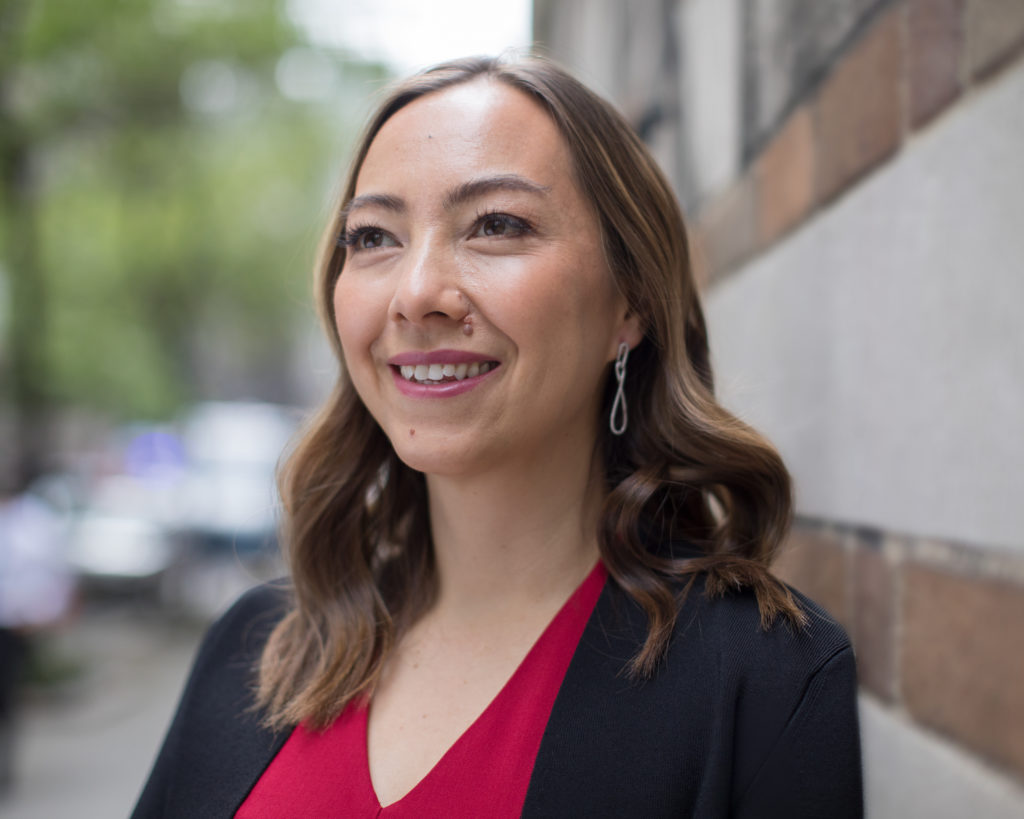
Kweilin wears the Sant Ambroeus jardigan and the Annie dress.
WHEN I WAS 13, MY BEST FRIEND’S BROTHER GOT A MERCEDES for his 16th birthday. My mom started to feel that we were growing up in a private school and a place [Seattle] where the values weren’t consistent with hers. She had grown up very, very poor in Malaysia—not knowing if she would have enough to eat, let alone buy books for school. She worried that my brother and I were starting to lose perspective, so she said, “Pick any country in the world, and go there for a year to live with a local family and go to a local school. No American or international schools allowed. I want you to appreciate how lucky we are here in the United States.” My mom is feisty, so saying “no” was not an option.
WE CHOSE FRANCE. This was 1989, so definitely pre-internet. We were using physical dictionaries to translate. It was really hard at first, but we ended up loving our year there. After that, my dad got a job in China. We went to visit him and decided to stay for a few years, going to local schools. Then my brother and I went to Ecuador for a year, because we wanted to learn Spanish. I went to a naval academy where I learned how to train and clean guns and leap off really high diving boards. And then I spent my final year of high school at an all-girls school in Japan. So our education was a world tour, and it was a wonderful experience.
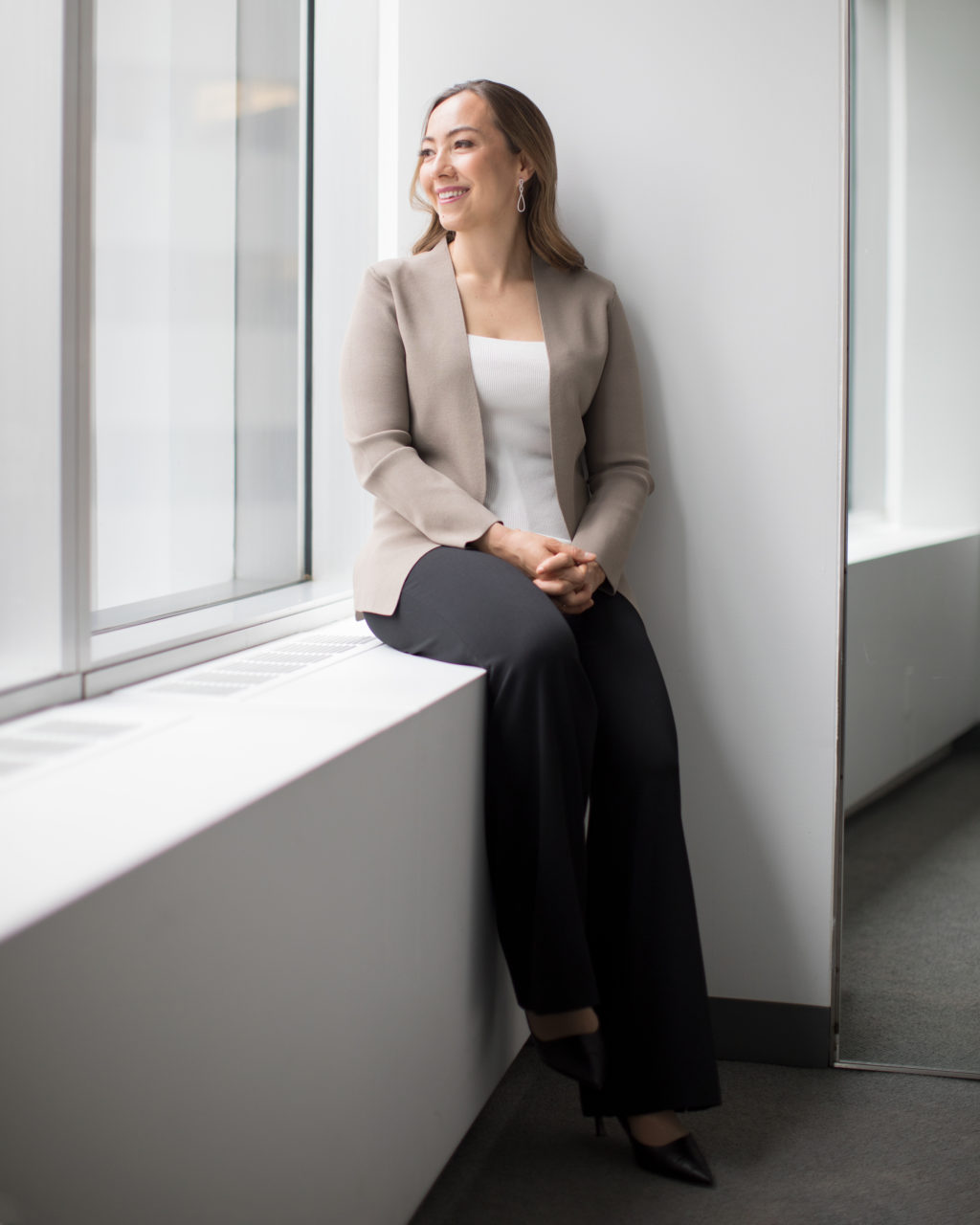
Kweilin wears the Woolf jardigan, the Rio top, the Clooney pant, and the Ginger pumps.
GROWING UP IN DIFFERENT PLACES made me keenly aware of how much women’s status and role in society differed across cultures. During my years in China, I absorbed that “women hold up half the sky,” which is a famous proclamation by Mao Zedong. But when I lived in Japan, things felt very different. Within our family, I felt encouraged by my really strong mother who knew what she wanted and how to achieve it. And now that I’m the mother of three young daughters, I want to empower them as well. But still, if you ask my daughter, who is six, and her classmates to draw a genius, almost all of them will draw a boy. I probably would have done the same at that age. That’s what we need to change—these ingrained notions that take hold at a very young age.
FOR A LONG TIME, THE NARRATIVE AROUND GENDER EQUALITY was that it was the right thing to do, but there wasn’t a strong business case that appealed to CEOs and political leaders about why they should prioritize it. So I asked our managing director at McKinsey to invest in a team that would spend six months building a quantitative case for why gender equity makes economic sense and how societal gaps are currently holding women back around the globe. That resulted in our Power of Parity research, which looked at 95 countries and proved that there’s a $28-trillion economic opportunity if women’s participation in the workplace were to match men’s.
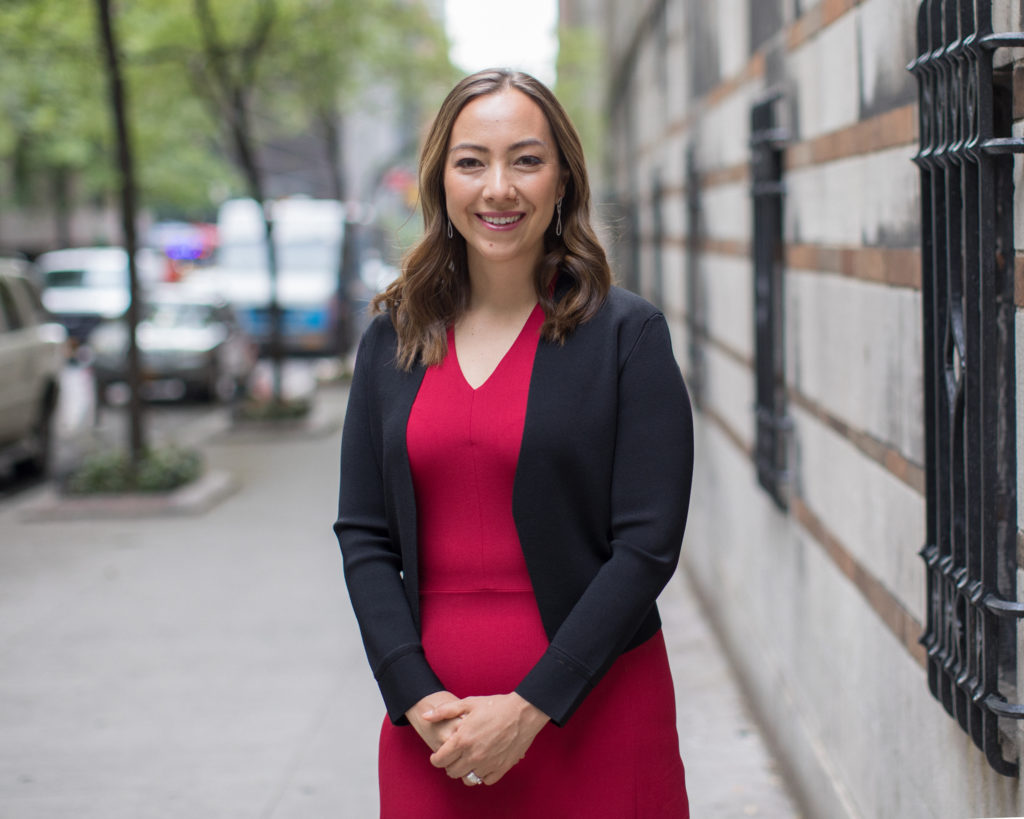
Kweilin wears the Sant Ambroeus jardigan and the Annie dress.
THERE ARE TWO PIECES OF ADVICE that I give young professionals. First: Ask for what you want. The times when I’ve been most fulfilled at work were times where I’ve thought through what I’m most excited to invest my time and energy in—and then I’ve spoken up and asked for those opportunities outright. Second: As a woman, you will naturally stand out in many professional environments, simply because you’re not a guy in slacks and a blue shirt. For better or worse, you stand out, so make it count in a positive way: Be prepared, think about how you want to be perceived. Over time, it can work to your advantage if you embrace it.
I DRESS BASED ON HOW I WANT TO BE PERCEIVED, which is typically: practical, comfortable, credible, professional, strong, colorful. On a typical day in the office, I wear a pantsuit with a bright-colored top and flats. When the stakes are a little higher, like when I present at the U.N., I’ll wear the same thing, but with heels. I like to rise to the occasion.
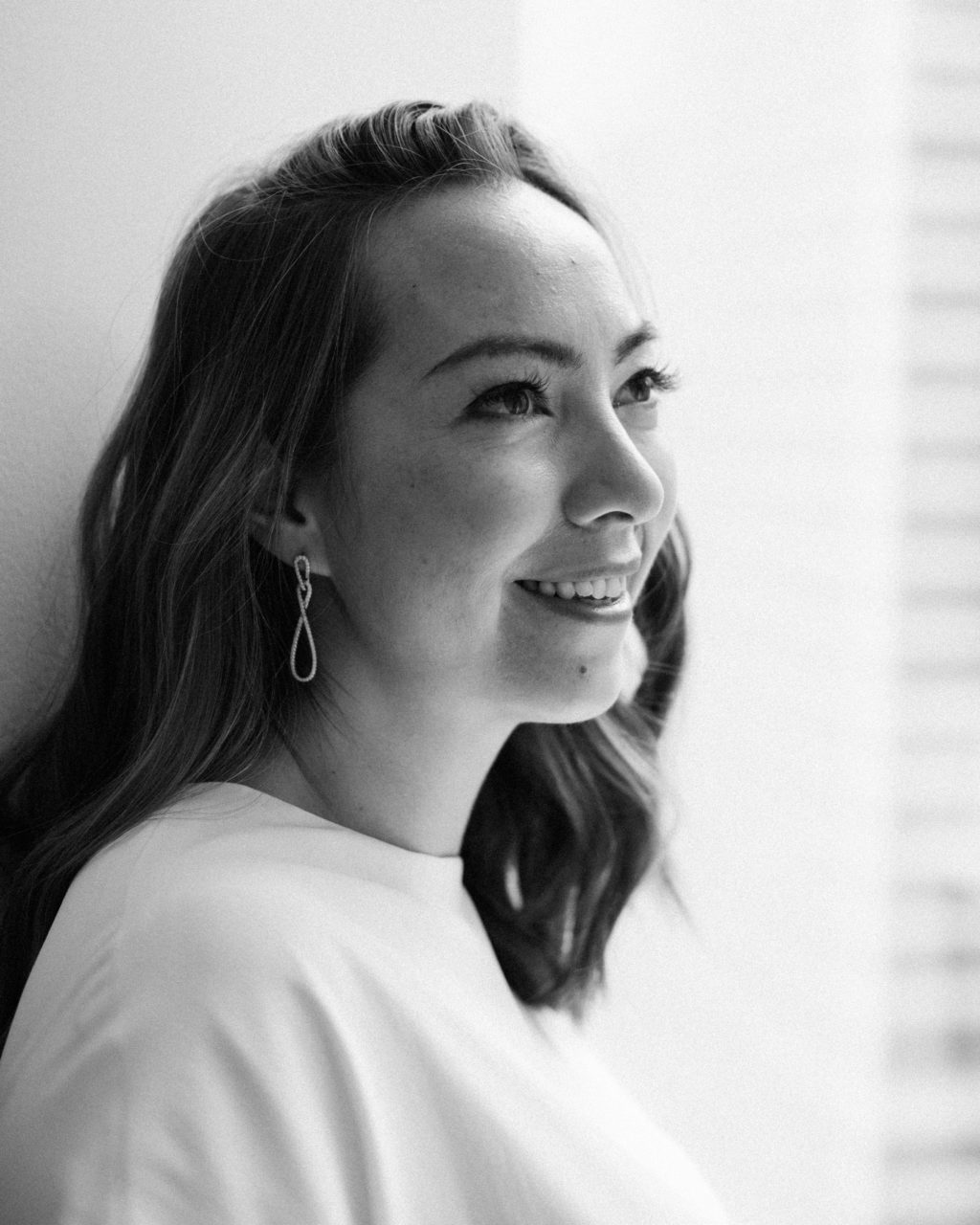
Kweilin wears the Nejvi top.
I’VE HAD A NUMBER OF MOMENTS in my career where I’ve questioned where I am and where I want to go next, but I try not to let day-to-day emotional fluctuations throw me off track. I call it “dampening the amplitude.” Instead of ending a meeting or a day or a week by thinking, “That was the worst/best!”, I try not to spiral in either direction. Instead, my husband and I step back twice a year to have a broader conversation: Are our jobs working for us? For the family? What adjustments do we need to make? Knowing that we’ll have that biannual conversation is liberating because it helps me save emotional energy on a day-to-day basis.
I’M RUTHLESS ABOUT HOW I SPEND MY TIME. Early in my career, I said ‘yes’ to too many things. Now, I keep a list of the things I say ‘no’ to, and before I say ‘yes’ to anything new, I figure out what I’m going to take off the list. It’s a bit like managing a closet: What are you going to clear out before you add something new? I’m constantly reprioritizing. I’ve started saying ‘no’ to internal leadership roles and some board seats, both of which would have been definite ‘yeses’ in the past.
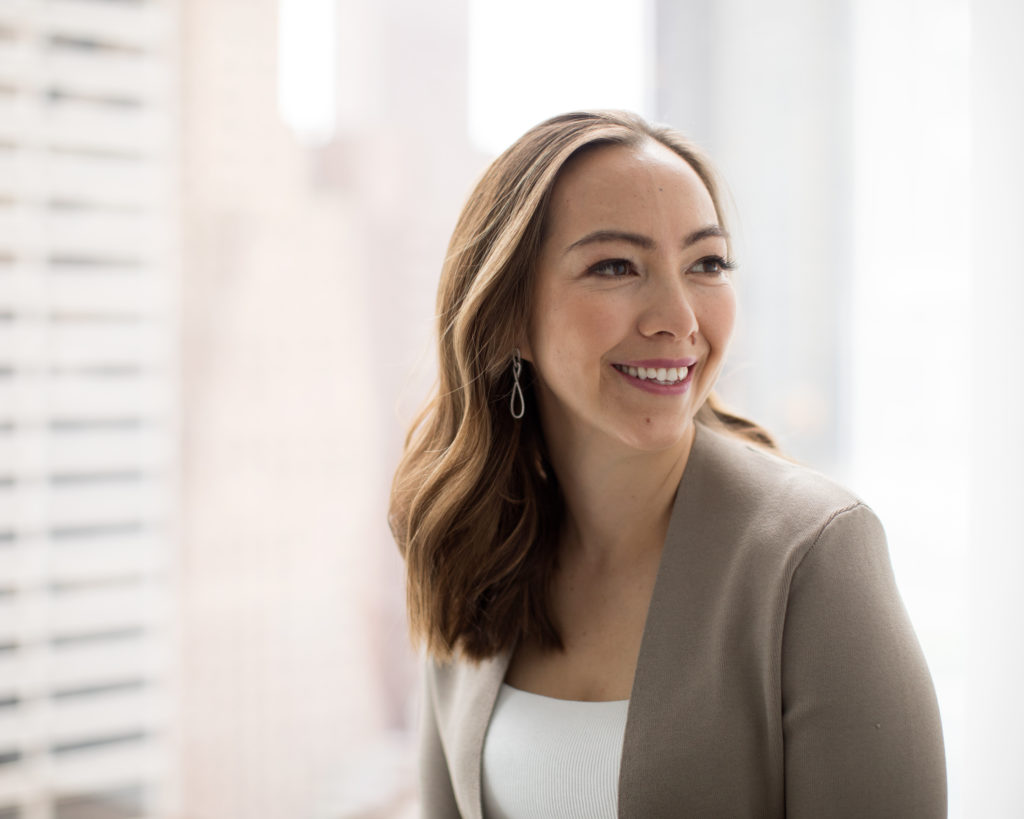
Kweilin wears the Woolf jardigan and the Rio top.
AT THIS POINT, MY CAREER HAS EXCEEDED ALL OF MY EXPECTATIONS. The three factors I’ve tried to balance are: being good at my job, enjoying my job, and getting paid well for the work I do. It’s hard to achieve all three of those things at the same time. Over the years, I’ve often had two of the three, but only recently do I feel like I’ve hit the trifecta, and I feel so fortunate. It makes me happy that my three daughters and my husband get to see me so excited and fulfilled by the work that I do.
I HAVE THREE HOPES FOR MY DAUGHTERS when it comes time for them to work. One is that they will never feel psychologically confined by their gender. If anything, I hope they will feel emboldened by it. The second is that I hope they will encounter workplaces that are more welcoming and equal than the current ones are. Our research suggests that it will take 100 years to close the gender equality gap in the C-suite, so based on that, my daughters will still run smack into that inequity, but I hope we can accelerate the rate of progress. Third, I hope they find work that has a positive impact on the world, but that they also feel truly excited about on a personal level. I hope they will feel fulfilled by their work in the same way that I feel fulfilled by mine.
Photographs by Rich Gilligan. Styling by Nyjerah Cunningham.





